Absolute Phase
Active Member
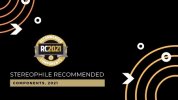
Air Tight PC-1 Coda:
Manufactured for Air Tight by Yoshio Matsudaira of My Sonic Lab, the PC-1 Coda MC cartridge has a very low impedance of 1.7 ohms and an output of 0.5mV, the latter higher than the moving-coil norm. Its body is made from an alloy of aluminium, magnesium, and silicon, plated first in nickel and then in chrome. Compliance specs aren't supplied for the 12.7gm PC-1 Coda, but the tracking-force range is given as 2-2.2g; MF found the lower number insufficient and declared the cartridge's tracking capabilities only "moderately good" at best. Yet the PC-1 Coda impressed him as a "masterfully voiced, low-coloration cartridge that worked well with all.
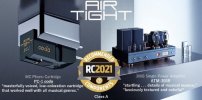
Air Tight ATM-300R: $18,500 with Electroharmonix 300B tubes.
AD, who was on record as having "never heard a single-ended 300B amp that I disliked," was especially smitten by this compact yet remarkably heavy (54lb) stereo amplifier: a three-stage design in which 12AU7 and 12BH7 dual-triodes are used as voltage-gain stages and drivers, respectively. The output tubes are a single 300B per channel, specified to output 9W each. Distinctively, the ATM 300R uses global feedback, but tapped from the primary rather than secondary side of each channel's output transformer. AD heard from the Air Tight amp "startling . . . details of musical nuance," "lusciously textured and colorful" strings and woodwinds, "realistic force" in its reproduction of timpani, and the ability to sound surprisingly big. He also made special mention of the ATM 300R's way with orchestral double-basses, noting their "depth and power, and far greater clarity of pitch than I've heard through any other 300B amplifier, bar none." Re-auditioning the amp in his newly modified listening room, through vintage Altec Flamenco loudspeakers, confirmed those positive impressions, and then some. Writing from his test bench, JA described the Air Tight as "well engineered," praising in particular its apparently "excellent output-transformer design." (Vol.41 No.2, Vol.42 No.11)
DS Audio Master 1: $22,500 with equalizer:

The Master 1 is the top model in DS Audio's line of three optical cartridges—transducers that use the vibrations of a phonograph needle to modulate the otherwise steady output of an LED, rather than generate an electrical signal from scratch (sorry)—and replaces the DS-W1, which MF reviewed in the September 2015 Stereophile. Because the vast majority of phono stages are designed to cope with signals produced by velocity-sensitivecartridges, the amplitude-sensitive Master 1 requires a very different sort of stage, and so a dedicated equalizer is included in its not-inconsiderable price. In his review of the DS-W1, Mikey had wondered if the "distractingly overemphasized bass" he heard was attributable to a flaw in that product's equalizer; that guess became a near certainty when he tried the Master 1 with its all-new equalizer: the latter offers three different output curves, and one offered enjoyably flat, unboosted bass. The verdict: "In the Master 1, DS Audio has fulfilled the promise of the original DS-W1." Pertinent specs: The Master 1 weighs 8.1gm, sports a MicroRidge stylus on a sapphire cantilever, and requires a downforce of 1.6–1.8gm. (Vol.41 No.10)
DS Audio DS-E1 optical cartridge and equalizer: $2750
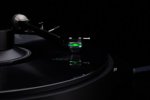
MF was not a fan of the original DS Audio optical cartridge, but he was impressed by this version. An elliptical stylus is attached to an aluminium cantilever and the DS-E1 tracks between 1.6gm and 1.8gm. MF wrote that the earlier version's "plasticky sound" was completely gone, and the low-frequency balance was "in the pocket"—not at all overemphasized. He added that even with its elliptical stylus, this optical cartridge was fast and remarkably transparent. The price includes the necessary equalizer module. (Vol.44 No.2 WWW)
DS Audio Vinyl Ionizer-001: $1795
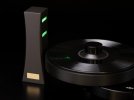
Put this wall-wart–powered "watchdog" near your turntable—within 2"—and it will reduce static electricity in the area, wrote MF. Expensive, but the unit's half-life is approximately 10,000 hours, or almost 3 hours per day for 10 years. (Vol.43 No.7 WWW)
Pass Laboratories XP-22: $9500
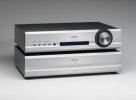
The two-box, solid-state, line-level Pass XP-22 provides both balanced (XLR) and single-ended (RCA) inputs and outputs, plus a vestigial tape loop. The XP-22's volume control—an Avago-sourced encoder that JCA describes as having "good bearings and a nice feel"—is the same one used in Pass's upmarket XP-30, and balance is adjustable via a chunky metal handset that "duplicates all front-panel controls, and then some." JCA heard "impressive" bass impact, "pinpoint" imaging within a large soundstage (albeit one that shrank a little at lower volumes), and sound that "seemed a tad more open" than with his reference preamp. In measuring the XP-22, JA found "superb" channel separation, "extremely low noise," an "excellent" (85.35dB) audioband S/N ratio, and "extremely low" THD+N: "superb measured performance." (Vol.42 No.6 WWW)
Pass Labs XP-32: $17,500
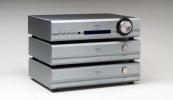
Replacing the well-regarded XP-30, the three-box XP-32 looks almost identical. To minimize noise, each channel's audio circuitry is housed in a separate chassis with the "dirty" control and power-supply circuitry in a third. Internal improvements include new transformers and DC-coupling of the balanced and single-ended inputs. The output stage runs a higher class-A bias with lower output impedance than the XP-30, and the volume control now operates in 0.5dB steps rather the earlier preamp's 1dB steps. JA was enthralled by the XP-32's transparency, hearing small details in his own recordings that he had not been fully aware of before. "A great preamplifier will allow through so much information, so much of the music, that the shortcomings of lesser speakers and amplifiers can be forgotten. The Pass Labs XP-32 satisfies that definition," he concluded. (Vol.44 No.3 WWW)
PrimaLuna EVO 400: $4699:
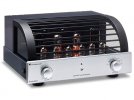
PrimaLuna's brand-new flagship line-level preamp—it replaces the company's DiaLogue Premium—the EVO 400 uses tubes for rectification as well as for gain and buffering, and includes input and output transformers that allow balanced operation. Noting that its extraordinary weight (52.8lb) comes not from its steel chassis but from its abundance of power-supply transformers and chokes, HR praised the EVO 400's very high parts quality and lavished similar praise on its "scintillating" presentation and ability to portray vivid, well-saturated musical colors while nevertheless being "more concise-sounding" than its predecessor in the PrimaLuna line. "It generated clearer, more muscular presentations with sharper focus and more distinctly punctuated momentums." Reporting from his test bench, JA noted that "the EVO 400 measures well for a tubed design." (Vol.42 No.7 WWW)
First Watt F8: $4000
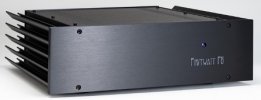
Designer Nelson Pass describes the F8 as "a stereo, two-stage, single-ended class-A amplifier using the [new-old-stock] Toshiba 2SJ74 P-channel JFETs and SemiSouth R100 SiC power JFETs for signal gain, plus IRFP240 MOSFET mu-follower current sources, for a total of only three devices per channel." Specified voltage gain is a low 20dB, and specified power is 25Wpc into 8 ohms and "maybe" 13Wpc into 4 ohms. HR found the F8's midrange as densely detailed as the First Watt J2's "but clearer and more brightly lit." He described the F8's production of recorded piano's left-hand octaves as "firmer and better defined." However, he preferred the slightly more expensive but similarly power-rated Pass Labs XA25's well-focused lower octaves and what he described as "its inherent hyper-transparency. Nevertheless, with the F8 driving his fave Falcon LS3/5a minimonitors, HR wrote that this pairing revealed more of each recording's sonic and poetic essence than—possibly—any other system he'd used in his Bed-Stuy bunker. (Vol.43 No.12 WWW)
Pass Laboratories XA200.8 monoblock: $42,000/pair
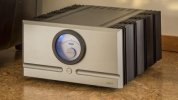
That a single Pass XA200.8 monoblock should weigh almost precisely the same as the average European adult (it won't catch up with the average North American adult for another 20lb) should come as no surprise: This is a 200W (into 8 ohms) amplifier that operates in class-A, and does so without any sort of microprocessor-controlled sliding-bias scheme. That takes big heatsinks and a good deal of design cunning, and the XA200.8 shows evidence of both, the latter in its DC-coupled front end and distinctive application of input-stage feedback, the former in its . . . well, in its big heatsinks. JVS, who found himself wearing a back brace by the time he'd packed up the review samples and sent them away, agreed with those visitors who described the sound of the XA200.8 as "organic." He wrote that the Passes seemed to "illuminate music from within" in a way that complemented the artistic brilliance of the musicians. He noted the XA200.8's lack of sweetening or softening, and concluded by praising it as "a masterpiece of amplifier design." After measuring the XA200.8, JA expressed his belief that it lacked sufficient bias current to operate in class-A for its full output power, yet nonetheless praised it for its "well-balanced audio engineering." (Vol.41 No.8 WWW)
Pass Laboratories XA25: $4900
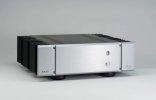
The lowest-priced amplifier in Pass Laboratories' XA series, the XA25 strips away all inessentials—front-panel meters, balanced inputs, excessive output power—and provides the listener with a three-stage amplifier in which output power is generated by a single pair of transistors per channel, operating in push-pull class-A. Output is specified as 25Wpc into 8 ohms or 50Wpc into 4 ohms. HR tried the Pass with a great variety of speakers, starting with a rebuilt pair of original Quad ESL electrostatics: "Through the Quads, the XA25 radically improved the tactile presence of music and musicians, their voices and instruments," he wrote. "It made the Quad's legendary midrange more solid, dynamic, and well defined than I'd ever thought possible." Another, very different panel speaker came next: "Driven by the Pass Labs XA25, the Magnepan .7s did real-life natural with ease and élan." Additionally, HR found, "bass weight and organ power were well reproduced by a speaker not famous for these traits." But even that pales in comparison to Herb's adventures using the Pass amp to drive his DeVore Orangutan O/93s: "I began to realize that the XA25 is the most transparent amplifier I've ever heard." His verdict: "reasonably priced, strong beyond its power rating, and positively revelatory." Writing from his laboratory, JA noted that the Pass far exceeded its rated power output, concluding that "the XA25 performed well on the test bench, as I've come to expect from Pass Labs." (Vol.41 No.2 WWW)
Pass Laboratories XA60.8 monoblock: $13,500/pair ★
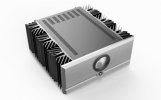
In reviewing Pass Laboratories' solid-state XA60.8 monoblock amplifier, JCA echoed JA's earlier published response to the amp's predecessor, the XA.60.5: "the best amplifier I've heard." Each 88lb XA60.8 operates in pure class-A, made possible in part by the amp's massive aluminum heatsinks and no-less-massive steel mains transformers. (Indeed, the most obvious change from XA60.5 to XA60.8 is a weight increase of 22lb—per channel.) Output is specified as 60W into 8 ohms, doubling to 120W into 4 ohms. JCA thought the Passes sounded "sweeter, warmer, more delicate" than the more expensive monoblocks that preceded them in his system, but reserved his greatest praise for their spatial prowess: "I'd never heard an amplifier make such an obvious difference. . . . To walk into this room while a good recording was playing was to enter an immersive aural apace." JA, now acting as measurer rather than reviewer, wrote from his test bench that the "well-engineered" XA60.8 "considerably exceeded" its rated output power, delivering 150W into 8 ohms at 1% THD, and he praised its A-weighted signal/noise ratio of 93.6dB: "This is a quiet amplifier." JCA's conclusion: "I am smitten." (Vol.40 No.12 WWW)
First Watt SIT-3: $4000
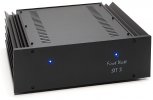
Designer Nelson Pass commissioned a now-defunct maker of semiconductors to produce for him an exclusive run of static induction transistors (SITs), and the limited-edition (250 units) SIT-3 may prove to be the last amplifier created to use them. The SIT-3 is a single-ended amp in which the input signal has its voltage gain boosted only by an onboard step-up transformer; the amp's single active stage provides only current gain. The product of all this simplicity is a decent enough 18Wpc, but with less gain (11.5dB) than most other amplifiers. HR tried the SIT-3 with a variety of loudspeakers and declared it "a modestly priced masterpiece" and "one of the two or three finest-sounding amplifiers I've heard anywhere, at any price." JA's measurements did nothing to dispel that notion: "Although [its] relatively high level of second harmonic distortion, which is a deliberate design choice, is controversial, the First Watt SIT-3 is a well-engineered amplifier." (Vol.42 No.2)
Pass Laboratories INT-25: $7250 $$$
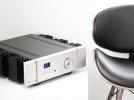
To HR, who prefers integrateds over separates yet wouldn't even consider buying an amp with a built-in DAC—"Why would I pollute a fine audio component with a non-upgradable and possibly third-rate ancillary?"—the Pass INT-25 emerged as an ideal component. The remarkably heavy (51lb) INT-25 is essentially a Pass XA25 power amp—class-A push-pull without degenerative feedback and offering 25Wpc—wedded to a minimalist line-level preamp. Used with his DeVore O/93 speakers and playing Erich Leinsdorf's recording of Wagner's Die Walküre, Herb found that "the INT-25 let the O/93s make that Die Walküre into something so beautiful I just laid back and basked in it." He also felt the INT-25 is capable of putting across "a subtle radiance" that eludes other solid-state electronics. With the amp on his test bench, JA found "much to admire in the Pass Labs INT-25's measured performance." HR's last word: "my new solid-state reference." (Vol.43 No.2 WWW)
DeVore Fidelity Orangutan O/96: $13,200/pair (stands included) ★
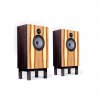
Handmade in Brooklyn, New York, the O/96 is a two-way, reflex-loaded, stand-mounted speaker with a rated sensitivity of 96dB/W/m and an unusually high nominal impedance of 10 ohms. The wide-baffle design measures 28.25" H by 18" W by 12" D and has a 1" silk-dome tweeter and a 10" paper-cone woofer. The O/96 exhibited a superb overall tonal balance with impressive clarity, color, impact, drama, and scale, said AD. "The O/96 is distinctly easy to drive with low-power amplifiers, yet it's clearer, wider of bandwidth, and more spatially accomplished than most other high-sensitivity loudspeakers," he summed up. JA's measurements uncovered a low-treble resonance and a lively enclosure, but these problems were considerably less audible than he was expecting. AD originally considered this a very high Class B recommendation, bordering on Class A, but as of April 2015, the rating is upgraded. In a Follow-Up, AD noted: "I have refined my own O/96 installation, moving each speaker farther from its sidewall, and minimizing the influence of unfortunate room characteristics with some John DeVore-inspired asymmetry," with excellent results. AD also quoted John DeVore's observation that, in 2013, the O/96 was his best-selling model "by a clear margin. I wouldn't be surprised to see that it did that again in 2014." (Vol.35 No.12, Vol.38 No.1. Vol.40 No.9 WWW)
Harbeth Monitor 30.2XD: $6795/pair (stands necessary)
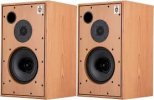
In its "well-crafted, elegantly proportioned," 18.1"-tall reflex-ported cabinet, the Harbeth Monitor 30.2 combines a 7.9" bass-midrange cone made of Harbeth's proprietary Radial2 polymer with a 1" soft-dome tweeter from SEAS. For the 40th Anniversary Edition of this model, derived from the BBC's LS5/9 design, Harbeth sweetens the deal with an exclusive silver eucalyptus veneer, a restyled tweeter grille, better crossover capacitors, and upgraded internal wiring and binding posts. Used on 24"-tall stands from TonTräger Audio ($1495/pair), the Harbeths delighted HR with easy-flowing music, vivid colors and textures, "unshakable clarity," and stereo images that were "tangibly there." Herb's verdict: "the most tuneful, accurate, neutral, fun, and music-loving stand-mounted two-way speaker I've heard." Writing from his lab, JA reported higher-than-specified sensitivity (87.3 vs 85dB) and benign impedance characteristics ("it should be an easy load for amplifiers to drive"), and declared the Monitor 30.2 "as well-engineered a design as I have come to expect from [Harbeth chief designer] Alan Shaw and his respect for the BBC tradition." (Vol.41 No.4 WWW)
DeVore Fidelity Gibbon X: $15,890/pair
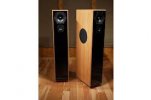
The Gibbon X is a three-way, four-driver design with a 0.75" ultra-low-mass textile dome tweeter, a 7" midrange driver with a phase plug, and two 9" side-mounted long-throw woofers, contained within a 46"-tall structure that is essentially two enclosures: an inner one made of plywood, and a bamboo outer shell. Of particular note is the next-to the lowest chamber: an area where the inner, plywood enclosure has no side walls, and so the bamboo outer walls are allowed to vibrate. In JCA's large (32' by 24') listening room, the Xes "did not sound reticent or especially warm. I heard the X as a bid for neutrality. It had considerably more energy in the higher frequencies than other DeVore speakers I've listened to, and though its bass went deeper, it was leaner." In measuring the Gibbon X, JA found slightly lower than specified sensitivity—88.8dB instead of 91.5dB—but confirmed that the X is "relatively easy for an amplifier to drive." Otherwise, JA observed, "in most respects, the Gibbon X offers good measured performance." (Vol.42 No.3 WWW)
DeVore Fidelity Orangutan O/93: $8400/pair $$$ ★
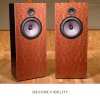
Made in Brooklyn, New York, the Orangutan O/93 is a two-way floorstanding loudspeaker with a SEAS 1" soft-dome tweeter—the same one used in DeVore's upmarket O/96—and a 10" paper-cone bass/midrange driver. It has a claimed sensitivity of 93dB and a nominal impedance of 10 ohms. The beautifully finished cabinet is made from a combination of Baltic birch plywood and MDF; the front baffle has a distinctive fiddleback mahogany veneer, while the sides, back, and rear are veneered in maple and finished in a semitranslucent gloss-black lacquer. Driving the O/93s with a Unison Research Simply Italy amplifier, ST noted the DeVores' lively, immediate sound: a sweet, extended treble; punchy bass; and a deep, wide soundstage with excellent center fill. In his follow-up, AD praised the O/93 for the physicality of its sound—the sense of touch in robustly played piano trills, the feel of mallet against marimba, the tactile pluck of a double bass—and for its fine overall balance that allowed excellent timbral color from acoustic instruments yet also "gave nearly full weight" to kettledrums. He regards the O/93 as among the best choices for people who appreciate the impact, drama, and thrills of vintage loudspeakers yet whose rooms and budgets require a contemporary speaker of more modest price and size—considered as which, the DeVore is "far better stuff than most everyone else is making." With the O/93s driven by the Linear Tube Audio Z10e amplifier, HR concluded, "I've experienced countless audio components that measured well, but only a rare few that produced authentic tone, nine octaves of natural detail, and copious atmospherics. The LTA Z10e driving the DeVore Orangutan O/93s did all that." In a measurements follow-up, JA estimated the O/93's sensitivity as 90.1dB—slightly lower than the nominal 93dB, yet still, when combined with the speaker's 10 ohm impedance, indicative of a very flea-watt-friendly loudspeaker. (Vol.37 No.1, Vol.38 No.12, Vol.39 No.6, Vol.41 No.5, Vol.42 No.1, Vol.43 No.5 WWW)
Harbeth HL-P3ESR XD: $3295/pair (stands necessary) ★
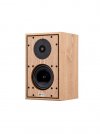
In its standard version, the two-way, sealed-cabinet P3ESR ($2195/pair) stands just 12" tall and partners a 0.75" tweeter with a 5" woofer, the latter using Harbeth's proprietary, patented Radial2 polymer for improved clarity and low-level resolution. Though restricted in loudness and bass extension, the P3ESR had a slightly warm overall balance characterized by smooth highs, an uncolored midrange, and stable and accurate stereo imaging. "The Harbeth P3ESR is the best iteration yet from any manufacturer of the BBC LS3/5A minimonitor concept," concluded JA. The littlest Harbeth also gets the strongest recommendation from JM. While its lack of low and midbass disqualified it for most rock and large-scale orchestral performances, felt BD, the Harbeth's incredible midrange clarity and detail made it an outstanding choice for small, intimate works. The 40th Anniversary Edition, which adds upgraded connectors, internal cable, and crossover capacitors, as well as an exclusive olivewood veneer and two commemorative badges, found favor with HR: Used on TonTräger P3 stands ($1485/pair) and compared to the standard P3ESRs, the 40th Anniversary Edition Harbeths showed him "greater separation of instruments, and a fleshier texture to [Birgit] Nilsson's voice." Herb regards the 40th Anniversary Edition P3ESR as "the best-built, most natural-sounding small speaker I have ever heard, and considers the prices of both versions "chickenfeed." (Vol.33 Nos.8 & 10, Vol.34 No.7, Vol.41 No.12 WWW)
Pass Labs HPA-1 headphone amplifier: $3500 ★
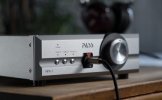
Also usable as a line-level preamp—it has a pair of single-ended RCA output jacks—the Pass Labs HPA-1 is a perfectionist-quality headphone amplifier that uses a MOSFET-based current-feedback amplifier to drive headphones ranging from 15 to 600 ohms. Its single headphone-output jack, also single-ended, is a Neutrik locking jack sized for ¼" plugs. After auditioning the HPA-1 with a variety of 'phones from Audeze, AudioQuest, and Master & Dynamic, JA declared that “in bass quality and authority, and in midrange transparency, the Pass Labs HPA-1 is without peer.” JA also brought the HPA-1 to his test bench, where it stood up to everything he could throw at it (well, not literally), prompting the appraisal: “superb audio engineering.” One of HR’s long-term reference headphone amplifiers. (Vol.39 Nos.7 & 9, Vol.43 No.7 WWW)
IsoAcoustics Gaia-Titan Cronos loudspeaker isolation feet: $1599.99/set of 4
IsoAcoustics Gaia-Titan Theis loudspeaker isolation feet: $899/set of 4
IsoAcoustics Gaia I loudspeaker isolation feet: $599.99/set of 4
IsoAcoustics Orea audio equipment isolators: “Indigo”, “Bordeaux”
Gaia and Orea isolation feet are both intended to isolate the products they support from their environment, and both are offered in different sizes/compliances, to suit various component weights. Gaias, intended to replace the spikes/feet of floorstanding speakers, are topped with threaded rods (plus adaptors) and come in sets of four; Oreas are sold singly, their smooth tops suitable for supporting amps/CD players/etc. After using a Gaia I set ($1199.98 for two sets of four) with his Monitor Audio loudspeakers, RD reported hearing "an across-the-board improvement in the sound," and he noticed a similar if less marked improvement after putting Oreas under his PS Audio monoblocks. JCA had a similarly positive experience with the Gaia-Titan Theis feet supporting Revel Salon2 loudspeakers, as did MF with the Gaia-Titan Cronos feet under his Wilson Alexxes: “The improvement in low-level detail, resolution, image focus, clarity, bass attack and decay, and transparency were—I’ll write it again— not at all subtle. They were huge!” AD put a set of four Gaia IIIs ($199.99) under the heavy wooden plinth of his Garrard 301 turntable and wrote, “the difference I heard was beyond my expectations.” For the better, he meant. (Vol.40 No.10, Vol.41 No.2. Vol.42 No.6, Vol.43 Nos.10 & 11 WWW)
All of the above brands represent by Absolute Phase (Exclusive India Distributor)

